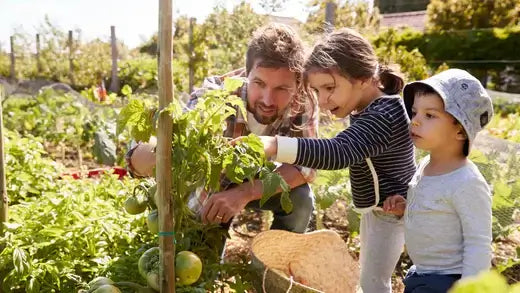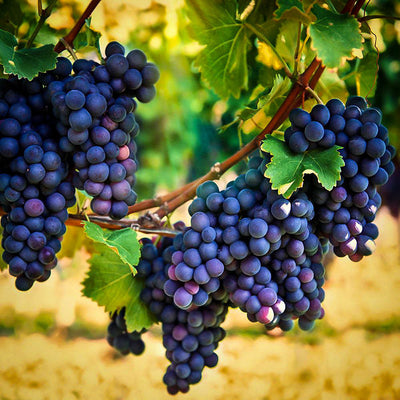10 Benefits of Family Gardening
Introduction: Family gardening is a beautiful activity that brings families closer together while fostering a deeper connection with nature. Engaging in gardening as a family can provide numerous physical, mental, and emotional benefits for all members involved. This article will explore ten critical advantages of family gardening and how this shared activity can contribute to a healthier and happier family unit.
Promotes Physical Activity: In a time where sedentary lifestyles are becoming more common, family gardening offers a great way to get everyone moving. Digging, planting, weeding, and watering involve various physical movements that help improve cardiovascular health, strength, and flexibility. Its shared physical activity encourages family members to step outside, breathe fresh air, and engage in productive exercise together.
Encourages Healthy Eating: When families grow their fruits, vegetables, and herbs, they have a readily available source of fresh, organic produce. Children are more likely to eat their vegetables if they've had a hand in growing them, fostering healthier eating habits from a young age. This experience also teaches them about the origin of their food, promoting an understanding of the importance of a balanced diet.
Educational Opportunities: Family gardening provides endless learning possibilities for children and adults alike. Kids can learn about plant life cycles, the role of insects, soil composition, and weather patterns. This hands-on education cultivates a sense of curiosity and encourages children to ask questions about the natural world around them.
Family Gardening is A Great Stress Relief:
Gardening has been shown to have therapeutic effects on mental health. Spending time outdoors, tending to plants, and connecting with nature can reduce anxiety. When families garden together, they create a shared environment of relaxation, fostering open communication and bonding through the calming effects of nature.
Environmental Awareness: Through family gardening, individuals gain a deeper appreciation for the environment and its delicate balance. Families can discuss topics like composting, water conservation, and the importance of pollinators. By understanding their impact on the ecosystem, family members may become more conscious of sustainable practices in their everyday lives.
Quality Family Time: Finding meaningful ways to spend time together can be a challenge in the hustle and bustle of modern life. Gardening offers a platform for quality family bonding where members can work collaboratively towards a common goal. Whether planting seeds, tending to plants, or harvesting the yield, these shared experiences create lasting memories and strengthen relationships.
Skill Development: Gardening requires various skills, from planning and organization to problem-solving and patience. Families can help children develop responsibility, patience, and teamwork skills by involving children in the process. These skills extend beyond the garden and can positively impact their lives.
Cultivates Responsibility: Caring for plants instills a sense of responsibility in children as they see the direct results of their actions. When a child waters a plant and watches it grow, they learn about cause and effect, nurturing, and the importance of consistency. These lessons contribute to the development of responsible individuals.
Family Gardening Encourages Creativity
Gardening is an art as much as a science. Designing the garden's layout, choosing plants, and arranging flowers allow creative expression. Family members can brainstorm, experiment with different designs, and create a space that reflects their unique tastes and personalities.
Fosters a Sense of Accomplishment: Successfully growing and caring for plants provides a sense of accomplishment for children and adults. Witnessing a seed evolves into a blooming plant or harvesting homegrown vegetables brings a profound sense of pride. These achievements boost self-esteem and confidence, creating positive emotions within the family.
Family gardening is a valuable and rewarding activity that benefits all participants. From physical health to mental well-being, from education to environmental awareness, the advantages of family gardening are both diverse and profound. This shared experience fosters a deeper connection within the family unit, promotes a love for nature, and cultivates essential life skills. So, gather your family, pick up your gardening tools, and embark on a journey of growth, learning, and togetherness through the joys of family gardening.
In an era dominated by technology and urbanization, the simple act of gardening might seem like a nostalgic pastime from the past. However, family gardening is far from obsolete; its value has grown even more significant in our fast-paced world. Engaging in gardening as a family offers many benefits beyond the mere cultivation of plants. It fosters a sense of togetherness, imparts essential life skills, promotes environmental awareness, and provides a platform for relaxation and stress relief.
Fostering Togetherness
In today's busy world, families often struggle to find quality time to spend together. Family gardening provides a natural and enjoyable way for parents and children to bond. Working side by side in the garden encourages communication, cooperation, and a sense of unity. Whether planting seeds, weeding, or harvesting, each task becomes an opportunity for family members to connect, share stories, and create lasting memories. The shared achievement of nurturing a garden from seedlings to a flourishing landscape cultivates a sense of accomplishment that strengthens familial relationships.
Imparting Essential Life Skills
Gardening is an educational experience that imparts numerous life skills to adults and children. Children learn about the life cycle of plants, the importance of nutrition, and the patience required for growth. They gain valuable insights into where their food comes from and develop a deeper appreciation for nature. For adults, gardening can serve as a platform to teach practical skills like planning, budgeting, and time management. As families plan and maintain their gardens, they learn problem-solving and adaptability while experiencing the joys of a hands-on learning process.
Promoting Environmental Awareness
In an era of increasing environmental concerns, family gardening offers an opportunity to instill a sense of responsibility and environmental stewardship in the younger generation. Through gardening, children and adults alike learn about the delicate balance of ecosystems, biodiversity's importance, and sustainable practices' impact. Growing their fruits and vegetables can also lead to reduced reliance on store-bought produce, which often requires significant resources for transportation and packaging. This knowledge empowers families to make more conscious choices for a greener future.
Providing Relaxation and Stress Relief
Nurturing plants and being outdoors contribute to reduced stress and improved mental well-being. Engaging in gardening as a family allows everyone to unplug from screens and experience the healing power of nature. The rhythm of planting, weeding, and tending to the garden provides a welcome break from the demands of daily life, allowing family members to recharge and connect with the earth. The act of gardening becomes a shared escape, fostering a sense of tranquility and calm amidst the chaos of modern living.
Cultivating a Sense of Ownership With Gardening
When families work together to create and maintain a garden, they develop a strong sense of ownership and pride in their accomplishments. Witnessing the transformation of a barren patch of land into a vibrant, thriving garden instills a sense of achievement that transcends generations. This ownership extends to the produce they harvest, leading to an increased appreciation for the value of hard work and patience. Family members become more connected to the environment and the fruits of their labor, fostering a sense of responsibility and gratitude.
In conclusion, the value of family gardening extends far beyond the act of tilling soil and planting seeds. It provides a holistic approach to family bonding, education, environmental awareness, and overall well-being. As technology continues to reshape our lives, cultivating a garden together as a family serves as a grounding force that reconnects us to nature and each other. The memories created, the lessons learned, and the sense of accomplishment achieved through family gardening make it an invaluable and timeless tradition worth preserving in our ever-evolving world.
The Best Plant Choices for a Fun Family Garden

